Kishor Datta Gupta
Continuous Monitoring of Large-Scale Generative AI via Deterministic Knowledge Graph Structures
Sep 04, 2025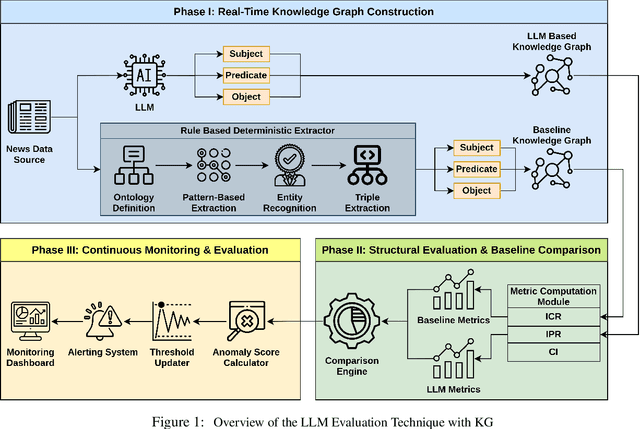

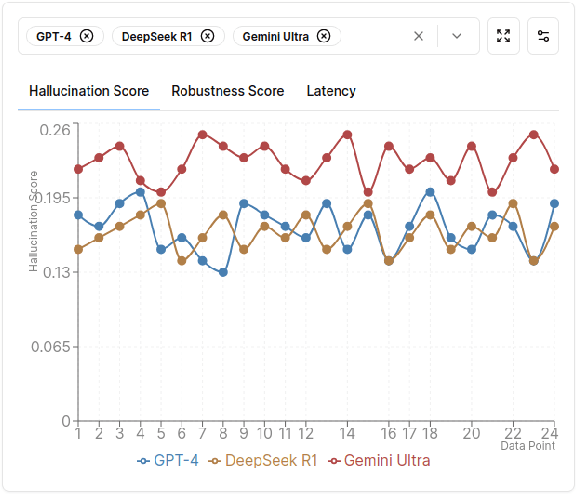

Abstract:Generative AI (GEN AI) models have revolutionized diverse application domains but present substantial challenges due to reliability concerns, including hallucinations, semantic drift, and inherent biases. These models typically operate as black-boxes, complicating transparent and objective evaluation. Current evaluation methods primarily depend on subjective human assessment, limiting scalability, transparency, and effectiveness. This research proposes a systematic methodology using deterministic and Large Language Model (LLM)-generated Knowledge Graphs (KGs) to continuously monitor and evaluate GEN AI reliability. We construct two parallel KGs: (i) a deterministic KG built using explicit rule-based methods, predefined ontologies, domain-specific dictionaries, and structured entity-relation extraction rules, and (ii) an LLM-generated KG dynamically derived from real-time textual data streams such as live news articles. Utilizing real-time news streams ensures authenticity, mitigates biases from repetitive training, and prevents adaptive LLMs from bypassing predefined benchmarks through feedback memorization. To quantify structural deviations and semantic discrepancies, we employ several established KG metrics, including Instantiated Class Ratio (ICR), Instantiated Property Ratio (IPR), and Class Instantiation (CI). An automated real-time monitoring framework continuously computes deviations between deterministic and LLM-generated KGs. By establishing dynamic anomaly thresholds based on historical structural metric distributions, our method proactively identifies and flags significant deviations, thus promptly detecting semantic anomalies or hallucinations. This structured, metric-driven comparison between deterministic and dynamically generated KGs delivers a robust and scalable evaluation framework.
Advanced Tool Learning and Selection System (ATLASS): A Closed-Loop Framework Using LLM
Mar 13, 2025Abstract:The combination of LLM agents with external tools enables models to solve complex tasks beyond their knowledge base. Human-designed tools are inflexible and restricted to solutions within the scope of pre-existing tools created by experts. To address this problem, we propose ATLASS, an advanced tool learning and selection system designed as a closed-loop framework. It enables the LLM to solve problems by dynamically generating external tools on demand. In this framework, agents play a crucial role in orchestrating tool selection, execution, and refinement, ensuring adaptive problem-solving capabilities. The operation of ATLASS follows three phases: The first phase, Understanding Tool Requirements, involves the Agents determining whether tools are required and specifying their functionality; the second phase, Tool Retrieval/Generation, involves the Agents retrieving or generating tools based on their availability; and the third phase, Task Solving, involves combining all the component tools necessary to complete the initial task. The Tool Dataset stores the generated tools, ensuring reusability and minimizing inference cost. Current LLM-based tool generation systems have difficulty creating complex tools that need APIs or external packages. In ATLASS, we solve the problem by automatically setting up the environment, fetching relevant API documentation online, and using a Python interpreter to create a reliable, versatile tool that works in a wider range of situations. OpenAI GPT-4.0 is used as the LLM agent, and safety and ethical concerns are handled through human feedback before executing generated code. By addressing the limitations of predefined toolsets and enhancing adaptability, ATLASS serves as a real-world solution that empowers users with dynamically generated tools for complex problem-solving.
A Comprehensive Review on Understanding the Decentralized and Collaborative Approach in Machine Learning
Mar 12, 2025



Abstract:The arrival of Machine Learning (ML) completely changed how we can unlock valuable information from data. Traditional methods, where everything was stored in one place, had big problems with keeping information private, handling large amounts of data, and avoiding unfair advantages. Machine Learning has become a powerful tool that uses Artificial Intelligence (AI) to overcome these challenges. We started by learning the basics of Machine Learning, including the different types like supervised, unsupervised, and reinforcement learning. We also explored the important steps involved, such as preparing the data, choosing the right model, training it, and then checking its performance. Next, we examined some key challenges in Machine Learning, such as models learning too much from specific examples (overfitting), not learning enough (underfitting), and reflecting biases in the data used. Moving beyond centralized systems, we looked at decentralized Machine Learning and its benefits, like keeping data private, getting answers faster, and using a wider variety of data sources. We then focused on a specific type called federated learning, where models are trained without directly sharing sensitive information. Real-world examples from healthcare and finance were used to show how collaborative Machine Learning can solve important problems while still protecting information security. Finally, we discussed challenges like communication efficiency, dealing with different types of data, and security. We also explored using a Zero Trust framework, which provides an extra layer of protection for collaborative Machine Learning systems. This approach is paving the way for a bright future for this groundbreaking technology.
An Extensive and Methodical Review of Smart Grids for Sustainable Energy Management-Addressing Challenges with AI, Renewable Energy Integration and Leading-edge Technologies
Jan 23, 2025

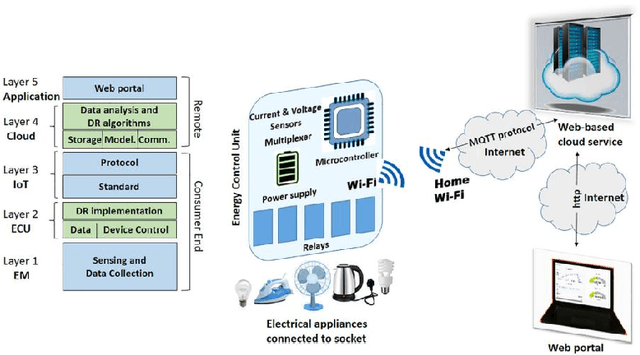
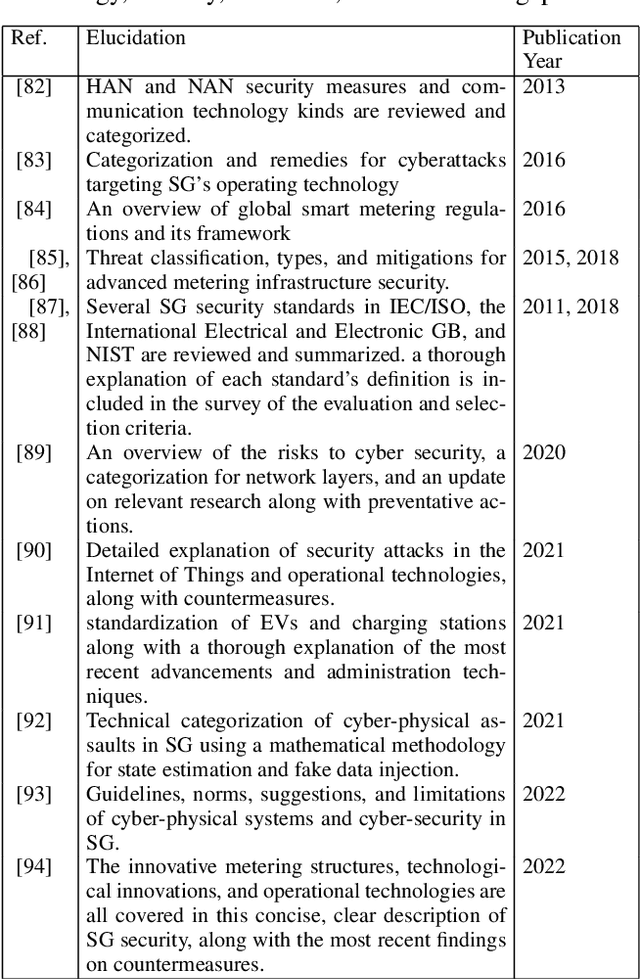
Abstract:Energy management decreases energy expenditures and consumption while simultaneously increasing energy efficiency, reducing carbon emissions, and enhancing operational performance. Smart grids are a type of sophisticated energy infrastructure that increase the generation and distribution of electricity's sustainability, dependability, and efficiency by utilizing digital communication technologies. They combine a number of cutting-edge techniques and technology to improve energy resource management. A large amount of research study on the topic of smart grids for energy management has been completed in the last several years. The authors of the present study want to cover a number of topics, including smart grid benefits and components, technical developments, integrating renewable energy sources, using artificial intelligence and data analytics, cybersecurity, and privacy. Smart Grids for Energy Management are an innovative field of study aiming at tackling various difficulties and magnifying the efficiency, dependability, and sustainability of energy systems, including: 1) Renewable sources of power like solar and wind are intermittent and unpredictable 2) Defending smart grid system from various cyber-attacks 3) Incorporating an increasing number of electric vehicles into the system of power grid without overwhelming it. Additionally, it is proposed to use AI and data analytics for better performance on the grid, reliability, and energy management. It also looks into how AI and data analytics can be used to optimize grid performance, enhance reliability, and improve energy management. The authors will explore these significant challenges and ongoing research. Lastly, significant issues in this field are noted, and recommendations for further work are provided.
Trustworthy XAI and Application
Oct 22, 2024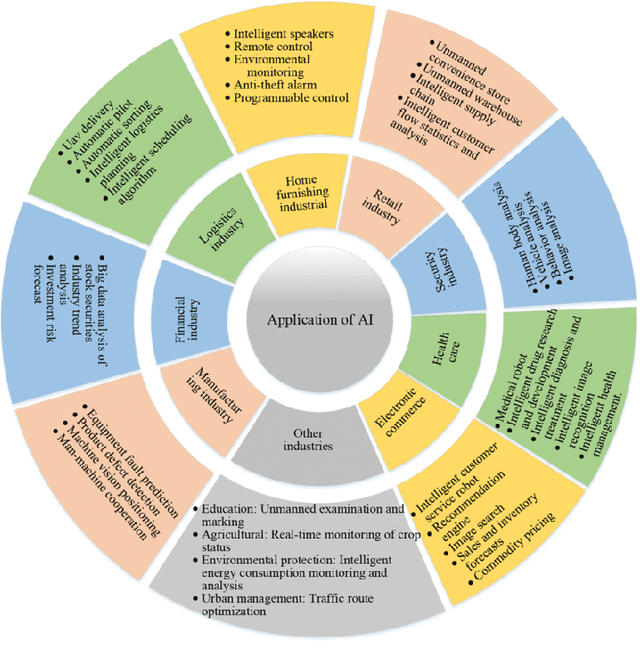

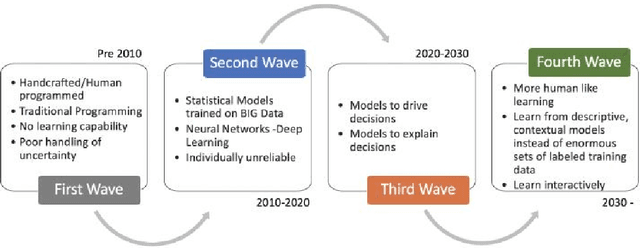
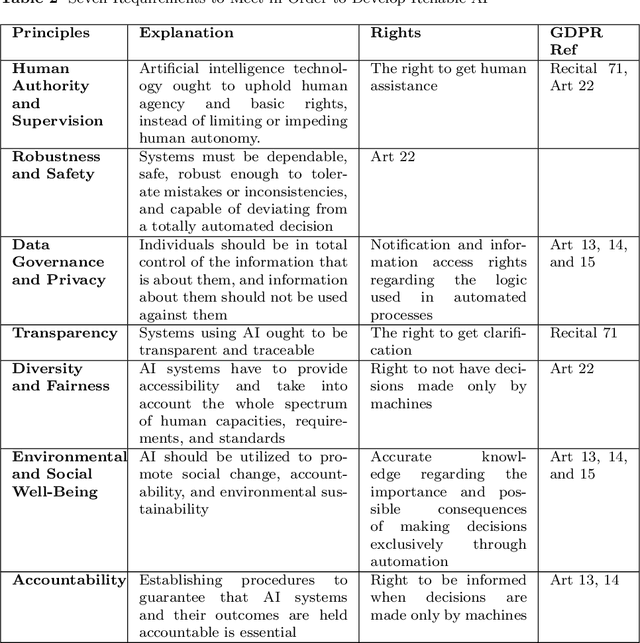
Abstract:One of today's most significant and transformative technologies is the rapidly developing field of artificial intelligence (AI). Deined as a computer system that simulates human cognitive processes, AI is present in many aspects of our daily lives, from the self-driving cars on the road to the intelligence (AI) because some AI systems are so complex and opaque. With millions of parameters and layers, these system-deep neural networks in particular-make it difficult for humans to comprehend accountability, prejudice, and justice are raised by the opaqueness of its decision-making process. AI has a lot of potential, but it also comes with a lot of difficulties and moral dilemmas. In the context of explainable artificial intelligence (XAI), trust is crucial as it ensures that AI systems behave consistently, fairly, and ethically. In the present article, we explore XAI, reliable XAI, and several practical uses for reliable XAI. Once more, we go over the three main components-transparency, explainability, and trustworthiness of XAI-that we determined are pertinent in this situation. We present an overview of recent scientific studies that employ trustworthy XAI in various application fields. In the end, trustworthiness is crucial for establishing and maintaining trust between humans and AI systems, facilitating the integration of AI systems into various applications and domains for the benefit of society.
Power Plays: Unleashing Machine Learning Magic in Smart Grids
Oct 20, 2024
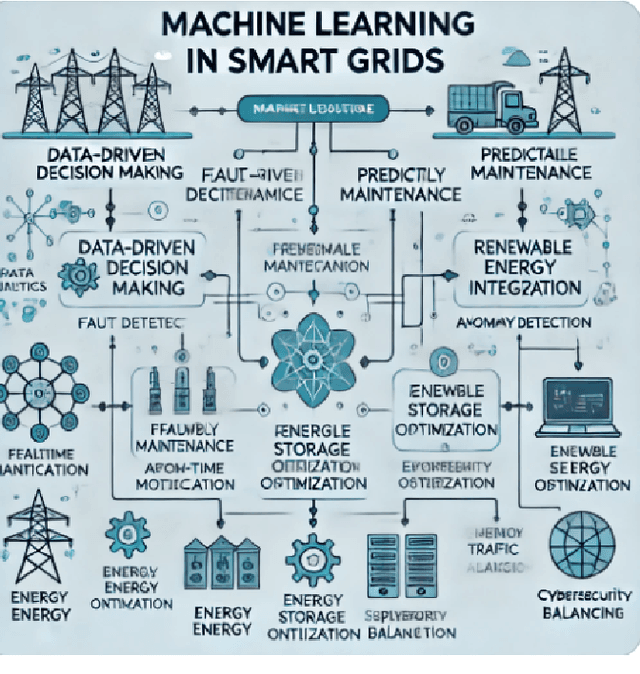

Abstract:The integration of machine learning into smart grid systems represents a transformative step in enhancing the efficiency, reliability, and sustainability of modern energy networks. By adding advanced data analytics, these systems can better manage the complexities of renewable energy integration, demand response, and predictive maintenance. Machine learning algorithms analyze vast amounts of data from smart meters, sensors, and other grid components to optimize energy distribution, forecast demand, and detect irregularities that could indicate potential failures. This enables more precise load balancing, reduces operational costs, and enhances the resilience of the grid against disturbances. Furthermore, the use of predictive models helps in anticipating equipment failures, thereby improving the reliability of the energy supply. As smart grids continue to evolve, the role of machine learning in managing decentralized energy sources and enabling real-time decision-making will become increasingly critical. However, the deployment of these technologies also raises challenges related to data privacy, security, and the need for robust infrastructure. Addressing these issues in this research authors will focus on realizing the full potential of smart grids, ensuring they meet the growing energy demands while maintaining a focus on sustainability and efficiency using Machine Learning techniques. Furthermore, this research will help determine the smart grid's essentiality with the aid of Machine Learning. Multiple ML algorithms have been integrated along with their pros and cons. The future scope of these algorithms are also integrated.
UAV (Unmanned Aerial Vehicles): Diverse Applications of UAV Datasets in Segmentation, Classification, Detection, and Tracking
Sep 05, 2024



Abstract:Unmanned Aerial Vehicles (UAVs), have greatly revolutionized the process of gathering and analyzing data in diverse research domains, providing unmatched adaptability and effectiveness. This paper presents a thorough examination of Unmanned Aerial Vehicle (UAV) datasets, emphasizing their wide range of applications and progress. UAV datasets consist of various types of data, such as satellite imagery, images captured by drones, and videos. These datasets can be categorized as either unimodal or multimodal, offering a wide range of detailed and comprehensive information. These datasets play a crucial role in disaster damage assessment, aerial surveillance, object recognition, and tracking. They facilitate the development of sophisticated models for tasks like semantic segmentation, pose estimation, vehicle re-identification, and gesture recognition. By leveraging UAV datasets, researchers can significantly enhance the capabilities of computer vision models, thereby advancing technology and improving our understanding of complex, dynamic environments from an aerial perspective. This review aims to encapsulate the multifaceted utility of UAV datasets, emphasizing their pivotal role in driving innovation and practical applications in multiple domains.
Physical Rule-Guided Convolutional Neural Network
Sep 03, 2024



Abstract:The black-box nature of Convolutional Neural Networks (CNNs) and their reliance on large datasets limit their use in complex domains with limited labeled data. Physics-Guided Neural Networks (PGNNs) have emerged to address these limitations by integrating scientific principles and real-world knowledge, enhancing model interpretability and efficiency. This paper proposes a novel Physics-Guided CNN (PGCNN) architecture that incorporates dynamic, trainable, and automated LLM-generated, widely recognized rules integrated into the model as custom layers to address challenges like limited data and low confidence scores. The PGCNN is evaluated on multiple datasets, demonstrating superior performance compared to a baseline CNN model. Key improvements include a significant reduction in false positives and enhanced confidence scores for true detection. The results highlight the potential of PGCNNs to improve CNN performance for broader application areas.
Deep Learning for Automated Wound Classification And Segmentation
Aug 10, 2024



Abstract:Wounds, such as foot ulcers, pressure ulcers, leg ulcers, and infected wounds, come up with substantial problems for healthcare professionals. Prompt and accurate segmentation is crucial for effective treatment. However, contemporary methods need an exhaustive model that is qualified for both classification and segmentation, especially lightweight ones. In this work, we tackle this issue by presenting a new architecture that incorporates U-Net, which is optimized for both wound classification and effective segmentation. We curated four extensive and diverse collections of wound images, utilizing the publicly available Medetec Dataset, and supplemented with additional data sourced from the Internet. Our model performed exceptionally well, with an F1 score of 0.929, a Dice score of 0.931 in segmentation, and an accuracy of 0.915 in classification, proving its effectiveness in both classification and segmentation work. This accomplishment highlights the potential of our approach to automating wound care management.
Securing the Diagnosis of Medical Imaging: An In-depth Analysis of AI-Resistant Attacks
Aug 01, 2024



Abstract:Machine learning (ML) is a rapidly developing area of medicine that uses significant resources to apply computer science and statistics to medical issues. ML's proponents laud its capacity to handle vast, complicated, and erratic medical data. It's common knowledge that attackers might cause misclassification by deliberately creating inputs for machine learning classifiers. Research on adversarial examples has been extensively conducted in the field of computer vision applications. Healthcare systems are thought to be highly difficult because of the security and life-or-death considerations they include, and performance accuracy is very important. Recent arguments have suggested that adversarial attacks could be made against medical image analysis (MedIA) technologies because of the accompanying technology infrastructure and powerful financial incentives. Since the diagnosis will be the basis for important decisions, it is essential to assess how strong medical DNN tasks are against adversarial attacks. Simple adversarial attacks have been taken into account in several earlier studies. However, DNNs are susceptible to more risky and realistic attacks. The present paper covers recent proposed adversarial attack strategies against DNNs for medical imaging as well as countermeasures. In this study, we review current techniques for adversarial imaging attacks, detections. It also encompasses various facets of these techniques and offers suggestions for the robustness of neural networks to be improved in the future.
 Add to Chrome
Add to Chrome Add to Firefox
Add to Firefox Add to Edge
Add to Edge